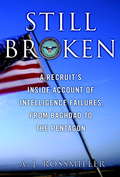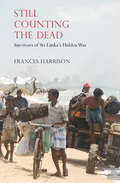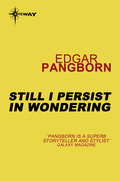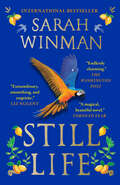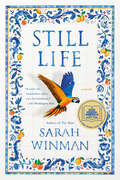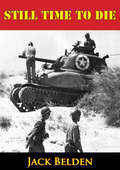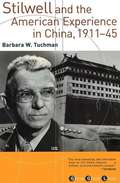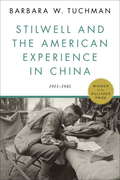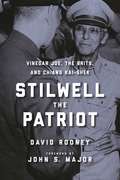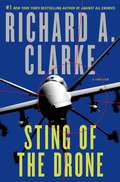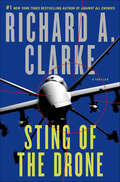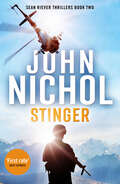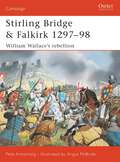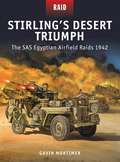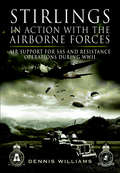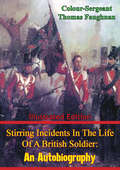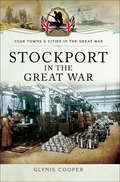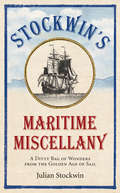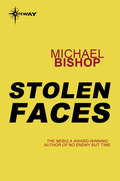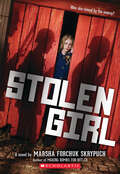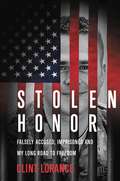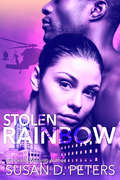- Table View
- List View
Still Broken: A Recruit's Inside Account of Intelligence Failures, from Baghdad to the Pentagon
by A. J. Rossmiller"Graduating from college with a degree in Middle East studies, Rossmiller joined the Defense Department's Intelligence Agency in 2004 and soon volunteered to join a DIA unit in Iraq. He vividly recounts his six-month tour--the physical misery of the environment and the frustrations of feeling his work rarely made a difference. Good intelligence, he explains, begins with people on the spot (in this case usually Iraqis), who take risks but supply information that is often fragmented, out-of-date and even self-serving or false. Analysts, such as the author, tease out useful data and deliver it quickly to fighting men. Hobbled by clueless superiors and their turf wars, as well as ignorance of Iraqi culture, DIA units, including Rossmiller's, witnessed American forces repeatedly acting on poor or outdated intelligence. They killed and arrested plenty of genuine insurgents but also killed, arrested and infuriated many innocent Iraqis, which crippled their efforts. Back in Washington, Rossmiller discovered the agency under pressure to provide good news for the Bush administration. Superiors regularly rejected his analyses of Iraqi politics as "too pessimistic." If repeated rewrites lacked an upbeat conclusion, superiors inserted one. That his predictions turned out to be correct made no difference. This intense, partisan arm-twisting devastated morale, resulting in an exodus of agency experts, including the author. "Rossmiller gives a lively insider's view of the petty and not-so-petty politics that affect the intelligence our leaders receive in their efforts to pacify Iraq; it is not a pretty picture." -Publishers Weekly. After 9/11, billions of dollars were spent to overhaul America's dysfunctional intelligence services, which were mired in bureaucracy, turf wars, and dated technology. But in this astonishing new book, A. J. Rossmiller, a former Defense Intelligence Agency analyst honored for his efforts here and in Iraq, reveals firsthand evidence that the intelligence system remains in disrepair. Still Broken is a blistering account of the ideology and incompetence that cripple our efforts to confront our enemies and fight our wars. Like many Americans, Rossmiller was moved to action by the attacks on 9/11. Freshly graduated from Middlebury College, he went to work for the U.S. government in 2004. But his enthusiasm slowly turned to disillusion as he began to fulfill his duties for DIA, the spy arm of the Department of Defense. There he found the Cold War and 9/11 generations at odds, the cause of fighting terrorism superseded by the need to contain a dismally managed war in Iraq, the Bush administration widely mocked and distrusted, and the intelligence process crippled from top to bottom. Rather than give up, Rossmiller instead went further, volunteering to go to Iraq to aid the troops on the ground, contribute to tactical intelligence, and, he hoped, help bring about an end to a fatally mismanaged war. For six months in that besieged country, he worked for the Direct Action Cell, the "track 'em and whack 'em" unit devoted to unmasking and targeting insurgents. He learned that, to put it mildly, the intelligence process bears no resemblance to the streamlined, well-resourced, and timely operation in a James Bond or Jason Bourne movie. He also experienced the disastrous counterterrorism and detainee strategies for which mass imprisonment--with little interest in guilt or innocence--is standard operating procedure. Back at the Pentagon as a strategic issues expert in the Office of Iraq Analysis, Rossmiller saw the administration's heavy hand in determining how information is processed. In a dysfunctional office filled with outsize personalities and the constant drone of Fox News, he filed reports on the ever-worsening situation in Iraq...
Still Counting the Dead: Survivor's of Sri Lanka's Hidden War
by Frances Harrison"An extraordinary book. This dignified, just and unbearable account of the dark heart of Sri Lanka needs to be read by everyone." — Roma Tearne, author of Mosquito The tropical island of Sri Lanka is a paradise for tourists, but in 2009 it became a hell for its Tamil minority, as decades of civil war between the Tamil Tiger guerrillas and the government reached its bloody climax. Caught in the crossfire were hundreds of thousands of schoolchildren, doctors, farmers, fishermen, nuns, and other civilians. And the government ensured through a strict media blackout that the world was unaware of their suffering. Now, a UN enquiry has called for war crimes investigation, and Frances Harrison, a BBC correspondent for Sri Lanka during the conflict, recounts those crimes for the first time in sobering, shattering detail.
Still I Persist in Wondering: Post-Holocaust Stories Book 4
by Edgar PangbornThe waters rose, and darkness was upon the earth.For a few decades after the Twenty-Minute War and the Red Plague, there were those who remembered the ways and pleasures of civilization, but soon the harsh realities of life in the flooded seaboard of North America pushed the survivors into a new Dark Age - an age of superstition and brutality, but one of seeking and poetry as well. This is the world of Edgar Pangborn's classic Davy, portrayed here over centuries of its change and growth. Here are heretics, and harpers, crusaders and cowards, magicians and mundane folk, in a stunning cycle of stories that have timeless quality of legend.
Still Life
by Sarah WinmanSet between World War II and the 1980s, Still Life is a beautiful, big-hearted story of strangers brought together by love, war, art, flood, and the ghost of E. M. Forster, from the bestselling, prize-winning author of Tin Man and When God Was a Rabbit.In the wine-cellar of a Tuscan villa, as the Allies advance and bombs fall around them, two people meet and share an extraordinary evening: Ulysses Temper is a young British soldier from London's East End; Evelyn Skinner is a worldly older art historian and possible spy. She has come to Italy to rescue paintings from the ruins and relive her memories of the time she encountered E.M. Forster and had her heart stolen by an Italian maid in a particular Florentine room with a view.Evelyn's talk of truth and beauty plants a seed in Ulysses's mind that night, one that will shape the trajectory of his life--and the lives of those who love him--for the next four decades. Moving from war-ravaged Tuscany to the boozy confines of The Stoat and Parrot pub in London and the piazzas of post-war Florence, Still Life is both sweeping and intimate, mischievous and deeply felt. It is a novel about beauty, love and fate, about the things that make life worth living, and the things we're prepared to die for.
Still Life
by Sarah WinmanA Good Morning America Book Club Pick A captivating, bighearted, richly tapestried story of people brought together by love, war, art, flood, and the ghost of E. M. Forster, by the celebrated author of Tin Man.Tuscany, 1944: As Allied troops advance and bombs fall around deserted villages, a young English soldier, Ulysses Temper, finds himself in the wine cellar of a deserted villa. There, he has a chance encounter with Evelyn Skinner, a middle-aged art historian who has come to Italy to salvage paintings from the ruins and recall long-forgotten memories of her own youth. In each other, Ulysses and Evelyn find a kindred spirit amidst the rubble of war-torn Italy, and set off on a course of events that will shape Ulysses's life for the next four decades. As Ulysses returns home to London, reimmersing himself in his crew at The Stoat and Parot—a motley mix of pub crawlers and eccentrics—he carries his time in Italy with him. And when an unexpected inheritance brings him back to where it all began, Ulysses knows better than to tempt fate, and returns to the Tuscan hills. With beautiful prose, extraordinary tenderness, and bursts of humor and light, Still Life is a sweeping portrait of unforgettable individuals who come together to make a family, and a deeply drawn celebration of beauty and love in all its forms.
Still Time To Die
by Jack BeldenVivid, intensely human impressions of the war in China, Malta, Tunisia and Sicily, by the author of "Retreat with Stilwell."Belden's first book, ""Retreat with Stilwell"" (Knopf) was one of the most distinguished correspondent's books. It did not have the sale it deserved--he insists on saying things that should be said rather than things people want to read...Even more true of this book, which--though two thirds of the text records war through battle, the remaining third dominates--sums up Belden's conclusions and grim determination to help his readers recognize the falsehood of war--falsehood not only in its reportage, but in its underlying causes, rooted in the world soul sickness, fascism, which he feels is pregnant in America and must be fought now. No analyzes the determining factors of the battlefield,--uncertainty, insecurity; need for political conviction of the importance of this war; divorce of the combat army from civilians; etc. The balance deals specifically with Ksuchow, Malta, the Mareth Line, Sicily, Messina, Salerno. Pungent phrase and fire for crusading passion.-Kirkus Reviews.
Stilwell and the American Experience in China, 1911-45
by Barbara W. TuchmanBarbara W. Tuchman uses the life of Joseph Stilwell, the military attache to China in 1935-39 and commander of United States forces and allied chief of staff to Chiang Kai-shek in 1942-44, to explore the history of China from the revolution of 1911 to the turmoil of World War II, when China's Nationalist government faced attack from Japanese invaders and Communist insurgents. Her story is an account of both American relations with China and the experiences of one of our men on the ground. In the cantankerous but level-headed "Vinegar Joe," Tuchman found a subject who allowed her to perform, in the words of The National Review, "one of the historian's most envied magic acts: conjoining a fine biography of a man with a fascinating epic story."<P><P> Pulitzer Prize Winner
Stilwell and the American Experience in China: 1911-1945
by Barbara W. TuchmanBarbara W. Tuchman won her second Pulitzer Prize for this nonfiction masterpiece—an authoritative work of history that recounts the birth of modern China through the eyes of one extraordinary American. General Joseph W. Stilwell was a man who loved China deeply and knew its people as few Americans ever have. Barbara W. Tuchman’s groundbreaking narrative follows Stilwell from the time he arrived in China during the Revolution of 1911, through his tours of duty in Peking and Tientsin in the 1920s and ’30s, to his return as theater commander in World War II, when the Nationalist government faced attack from both Japanese invaders and Communist insurgents. Peopled by warlords, ambassadors, and missionaries, this classic biography of the cantankerous but level-headed “Vinegar Joe” sparkles with Tuchman’s genius for animating the people who shaped history. Praise for Stilwell and the American Experience in China “Tuchman’s best book . . . so large in scope, so crammed with information, so clear in exposition, so assured in tone that one is tempted to say it is not a book but an education.”—The New Yorker “The most interesting and informative book on U.S.–China relations . . . a brilliant, lucid and authentic account.”—The Nation “A fantastic and complex story finely told.”—The New York Times Book ReviewFrom the Trade Paperback edition.
Stilwell and the Chindits: The Allies Campaign in Northern Burma, 1943–1944 (Images of War)
by Jon Diamond Dr.This latest book in the highly successful Images of War series covers the dramatic events that saw ultimate Allied victory over the Japanese in remote Northern Burma on the Chinese border. The plan involved two separate but concurrent operations. US Army General Joseph Stilwell was ordered to train up two Chinese divisions and together with a US special force (Merrill's Marauders) advance to seize the key Japanese base at Myitkyina.At the same time Brigadier Orde Wingate and his 77 Brigade (known as the Chindits) penetrated and fought deep behind Japanese lines. While the success of this Operation (LONG STOP) remains debatable, the Chindits' courage and determination destroyed the myth of Japanese invincibility. Despite terrible deprivation a second much larger operation (THURSDAY) went ahead.As this highly informative and well illustrated book reveals, the concept was ultimately successful with Myitkyina falling to Stilwell's Chinese/US force in mid 1944. The Chindits and Maranders, now greatly depleted by enemy action, malnutrition and disease were evacuated to India but became legends.
Stilwell the Patriot: Vinegar Joe, the Brits, and Chiang Kai-Shek
by John S. Major David RooneyJoe Stilwell, known as "Vinegar Joe” for his caustic personality, was stationed in Burma during World War II and famously differed in strategy from other commanders in his division. In retrospect analyses, it’s said that if he had gotten his way, the United States might have defeated the Communists in 1945 and changed the course of history. This meticulously-reached biography of Vinegar Joe presents an intimate account of his career, working as Chinese military leader Chiang Kai-shek’s chief of staff, the commander of the Chinese divisions in Burma, and the deputy supreme commander of the South East Asia Command. It explores Stilwell’s determination to drive a road through the jungle in order to reopen the old Burma Road, and his passion to ensure that the colossal American contribution to the Burma Campaign was not misappropriated by Chiang, his boss. In recounting Vinegar Joe’s unusual escapades, historian David Rooney provides an intimate understanding of why Stilwell came to distrust and despise Chiang, and why he was fiercely critical of his fellow commanders. Simultaneously sympathetic and critical, the biography is one of a controversial American patriot. And in addition to Rooney’s compelling and enlightening text, Stilwell the Patriot features fifteen black-and-white photographs and six maps. The images includes photographs of Stilwell and Chiang, American tanks in Burma, and maps of where nearby battles took place. After a limited print-run more than ten years ago, Stilwell the Patriot is being put back in print shortly after the seventieth anniversary of the Burma Campaign. Skyhorse Publishing, along with our Arcade, Good Books, Sports Publishing, and Yucca imprints, is proud to publish a broad range of biographies, autobiographies, and memoirs. Our list includes biographies on well-known historical figures like Benjamin Franklin, Nelson Mandela, and Alexander Graham Bell, as well as villains from history, such as Heinrich Himmler, John Wayne Gacy, and O. J. Simpson. We have also published survivor stories of World War II, memoirs about overcoming adversity, first-hand tales of adventure, and much more. While not every title we publish becomes a New York Times bestseller or a national bestseller, we are committed to books on subjects that are sometimes overlooked and to authors whose work might not otherwise find a home.
Sting Of The Drone
by Richard A. ClarkeIn Washington, D. C. , the Kill Committee gathers in the White House's Situation Room to pick the next targets for the United States drone program. At an airbase just outside Las Vegas, a team of pilots, military personnel, and intelligence officers follow through on the committee's orders, finding the men who have been deemed a threat to national security and sentenced to death. Meanwhile, on the other side of the world, in the mountains where the drones hunt their prey, someone has decided to fight back. And not just against the unmanned planes that circle their skies, but against the Americans at home who control them. In Sting of the Drone, bestselling author Richard A. Clarke draws on his decades-long experience at the very highest levels of national security to craft a thrilling novel that has the feel of nonfiction, taking us behind closed doors to meet the men and women who protect America--and those who seek to do us harm.
Sting of the Drone: A Thriller
by Richard A. Clarke“Prepare for your hand to take hold of the joy stick, your heart to lodge firmly in your throat. Tom Clancy takes to the air. Put this book on your radar.” —Ridley Pearson, New York Times–bestselling authorIn Washington, D.C., the Kill Committee gathers in the White House’s Situation Room to pick the next targets for the United States drone program. At an airbase just outside Las Vegas, a team of pilots, military personnel, and intelligence officers follow through on the committee’s orders, finding the men who have been deemed a threat to national security and sentenced to death.Meanwhile, on the other side of the world, in the mountains where the drones hunt their prey, someone has decided to fight back. And not just against the unmanned planes that circle their skies, but against the Americans at home who control them.In Sting of the Drone, #1 New York Times–bestselling author Richard A. Clarke draws on his decades-long experience at the very highest levels of national security to craft a thrilling novel that has the feel of nonfiction, taking us behind closed doors to meet the men and women who protect America—and those who seek to do us harm.“On rare occasions a thriller comes along that turns out to be prophecy: Sting of the Drone is one of them. This rip-snorting thriller may be the best unclassified peek you will ever get on the new high-tech offensive in the war against terrorism. A seminal, prophetic, troubling must-read.” —Stephen Coonts, New York Times–bestselling author“The take-no-prisoners plot serves up a banquet of high drama, action, and adventure. A great read.” —Steve Berry, New York Times–bestselling author
Stinger (The Sean Riever Thrillers)
by John NicholA Royal Air Force pilot goes undercover in Afghanistan following a missile attack on a civilian plane in this thriller by the author of Exclusion Zone. Sickened by the bloody toll of a war that cost the lives of friends and the woman he loved, RAF pilot Sean Riever transfers units, heading for the remote mountains of Afghanistan. His work there with the mine-clearance teams takes him as close to the shadow of war as he ever wants to get again. But when a British passenger plane is shot down by a Stinger missile over the east coast of America, Sean is forced once more into the cauldron of war . . . Gulf War hero John Nichol returns with a breathlessly exciting thriller, combining full-throttle action with frightening topicality, perfect for fans of James Deegan, Frederick Forsyth, and Chris Ryan.Praise for Exclusion Zone&“Fresh and compelling . . . As good as anything written by Jeffrey Archer or Dick Francis.&” —Daily Mail &“A cracking combat thriller with a delicate love story.&” —Mail on Sunday
Stirling Bridge and Falkirk 1297-98
by Angus Mcbride Peter ArmstrongOsprey's study of William Wallace's rebellion in the First War of the Wars of Scottish Independence (1296-1357). The death of the last of the Scottish royal house of Canmore in 1290 triggered a succession crisis. Attempts to undermine Scottish independence by King Edward I of England sparked open rebellion culminating in an English defeat at the hands of William Wallace at Stirling Bridge in 1297. Edward gathered an army, marched north and at Falkirk on 22 July 1298 he brought Wallace's army to battle. Amid accusations of treachery, Wallace's spearmen were slaughtered by Edward's longbowmen, then charged by the English cavalry and almost annihilated. In 1305 Wallace was captured and executed, but the flame of rebellion he had ignited could not be extinguished.
Stirling's Desert Triumph - The SAS Egyptian Airfield Raids 1942
by Gavin MortimerThe night of July 26, 1942 saw one of the most audacious raids of World War II, just as the outcome of that conflict hung in the balance. In North Africa, a convoy of 18 Allied jeeps carrying Special Air Service personnel appeared out of the early-morning darkness and drove onto the Axis landing strip at Sidi Haneish in the Egyptian desert. Within the space of a few savage minutes 18 Axis aircraft were ablaze; a dozen more were damaged and scores of guards lay dead or wounded. The men responsible for the raid then vanished into the night as swiftly as they had arrived, prompting the Germans to dub the enemy leader, David Stirling, 'The Phantom Major'. Featuring full-color artwork, gripping narrative and incisive analysis, this engaging study recounts the origins, planning, execution and aftermath of the daring raid that made the name of the SAS at the height of World War II.
Stirlings in Action with the Airborne Forces: Air Support For Special Forces and Resistance Operations During WWII
by Dennis WilliamsThis is the history of two RAF squadrons who shared many tasks during WWII. Although there was a healthy rivalry between personnel serving on 190 and 620 Squadrons, there was also a deep sense of camaraderie that forged bonds between them.
Stirring Incidents in the Life of a British Soldier: An Autobiography [Illustrated Edition]
by Colour-Sergeant Thomas Faughnan[Illustrated with over two hundred and sixty maps, photos and portraits, of the battles, individuals and places involved in the Crimean War]Thomas Faughnan served in the 6th Royal Regiment, now the Royal Warwickshire Regiment, during a most bloody period of British History. Born in Derry in Ireland, he enlisted in the British Army to escape poverty and deprivation; his was destined to be a hard life of soldiering. His memoirs abound with details of the dull and brutal life of the private soldier on marches and in barracks in England before his first major service abroad in the Crimea. Colour-Sergeant Faughnan, as he had risen in the ranks, served with distinction at the siege of Sebastopol amongst the snow and disease. He writes movingly of the desperate conditions that the average ranker suffered and fought under in Russia and of the heroic engagements at Balaklava and the assault of the Redan. The author survived to see further action in Egypt before eventual retirement in Canada.A little-known but brilliant memoir from the ranks of the British Army.
Stockport in the Great War (Your Towns And Cities In The Great War Ser.)
by Glynis CooperInterest in the theft of cucumbers initially took precedence over news that war had been declared, but Stockport rallied quickly. Wakes week was cancelled, the local 6th Battalion of the Cheshires went to the Front and the town transformed half of its schools into much-needed military hospitals. Admirably, the remaining schools coped with double the number of children but education suffered little. At the time, Stockport was two towns; the millscapes around the Mersey and the Goyt and the wealthier genteel suburbs bordering the Cheshire countryside. Economy and efficiency in the use of food and fuel was preached in the local paper alongside advertisements for silks, satins, velvets, furs and evening gowns. The cotton and hatting trades, transport and agriculture, suffered badly from loss of resources and manpower but resisted the use of female labour with great hostility. Food, fuel and lighting restrictions caused problems and there were accusations of profiteering and hoarding.Always in competition with Manchester, Stockport folk did things their way. Following Zeppelin attacks on the east coast, street lights were ordered to be partially shaded. Manchester shaded its lights from the top, while Stockport shaded its lights from the bottom, causing confusion in the darkened streets below and prompting one wit to write that while Manchester was expecting attacks from Zeppelins, Stockport was clearly expecting attacks from submarines. However, despite much political and material disaffection, the townsfolk united firmly against the kaiser. This book is is a timely reminder of how the local community worked together to provide munitions for the war, food parcels and comforts for the troops while keeping the home fires burning.
Stockwin's Maritime Miscellany: A Ditty Bag of Wonders from the Golden Age of Sail
by Julian StockwinLt Cdr Julian Stockwin shares his love and knowledge of the sea in this entertaining collection of maritime stories and little-known trivia. Featuring nautical facts and feats, including superstitions at sea, the history of animals on the waves - until 1975 when all animals were banned from Royal Navy ships - and how the inventor of the umbrella helped man the British Navy, it is packed with informative tales. Focusing on the glory days of tall ships he explores marine myths and unearths the truth behind commonly held beliefs about the sea, such as whether Lord Nelson's body was really pickled in rum to transport it back to England after his death at Trafalgar. Interspersed throughout are salty sayings showing the modern words and phrases that originate from the mariners of old - 'cut of his jib', 'high and dry', 'the coast is clear', 'first rate' and 'slush fund'. Accompanied by nostalgic black and white line drawings Stockwin's Maritime Miscellany is a charming giftbook guaranteed to appeal to the sailing enthusiast, but also amuse and inform even the staunchest landlubber.
Stolen Childhoods: The Untold Story of the Children Interned by the Japanese in the Second World War
by Nicola TyrerThe extraordinary stories of the children interned by the Japanese during the Second World War.When the Japanese entered the war in 1941, some 20,000 British civilians in the European colonies in Asia were rounded up and marched off to concentration camps where they were to remain for three long years. Over 3,000 of them were children. This is the first time their extraordinary experiences of suffering, endurance and bravery have been collected together.STOLEN CHILDHOODS offers a window to a forgotten era and explores what happened when that world was brutally and suddenly shattered. Living on what effectively became the frontline of a war, in daily contact with an enemy whose values were totally alien, they witnessed acts of shocking violence. Harrowing, but ultimately uplifting, internment from a child's perspective is a complex - and untold - story. It is a story that features horror, suffering and self-sacrifice, but also celebrates the resilience, adaptability and irrepressibility of the human spirit.
Stolen Childhoods: The Untold Story of the Children Interned by the Japanese in the Second World War
by Nicola TyrerThe extraordinary stories of the children interned by the Japanese during the Second World War.When the Japanese entered the war in 1941, some 20,000 British civilians in the European colonies in Asia were rounded up and marched off to concentration camps where they were to remain for three long years. Over 3,000 of them were children. This is the first time their extraordinary experiences of suffering, endurance and bravery have been collected together.STOLEN CHILDHOODS offers a window to a forgotten era and explores what happened when that world was brutally and suddenly shattered. Living on what effectively became the frontline of a war, in daily contact with an enemy whose values were totally alien, they witnessed acts of shocking violence. Harrowing, but ultimately uplifting, internment from a child's perspective is a complex - and untold - story. It is a story that features horror, suffering and self-sacrifice, but also celebrates the resilience, adaptability and irrepressibility of the human spirit.
Stolen Faces
by Michael BishopMuphormosy, a disease not unlike leprosy, has ravaged the first settlers on the planet Tezcatl. Generations later, their similarly emaciated descendants live in a compound where they are isolated from the planet's normal inhabitants. The new kommissar of the compound, Lucian Yeardance, cares for his charges and alleviates their suffering with the narcotic heartsease. despite the open revulsion the normal inhabitants show for the maimed men and women, Luican determines to find out what the dread disease really is. Still, he is unprepared for the appalling discovery he makes: except for the open lesions and missing limbs and digits, not one of the muphormers shows a sign of any disease.
Stolen Girl (Scholastic Press Novels Ser.)
by Marsha Forchuk SkrypuchNadia is haunted by World War II. Her memories of the war are messy, coming back to her in pieces and flashes she can't control. Though her adoptive mother says they are safe now, Nadia's flashbacks keep coming.Sometimes she remembers running, hunger, and isolation. But other times she remembers living with a German family, and attending big rallies where she was praised for her light hair and blue eyes. The puzzle pieces don't quite fit together, and Nadia is scared by what might be true. Could she have been raised by Nazis? Were they her real family? What part did she play in the war?What Nadia finally discovers about her own history will shock her. But only when she understands the past can she truly face her future.Inspired by startling true events, Marsha Forchuk Skrypuch delivers a gripping and poignant story of one girl's determination to uncover her truth.
Stolen Honor: Falsely Accused, Imprisoned, and My Long Road to Freedom
by Clint LoranceThe captivating account of how Clint Lorance, a soldier who became a scapegoat for a corrupt military hierarchy, was falsely charged with war crimes, imprisoned, and eventually pardoned by President Trump. While out on patrol in Afghanistan, Clint Lorance learned that two men, both suspected suicide bombers, were speeding toward a crowded city on motorcycles. Lorance couldn't see them, but his men on the ground had clear shots. After a split second, he gave the order to shoot, killing both men. In the months that followed, Lorance was arrested by the military and put on trial for war crimes. Prosecutors claimed that the order he gave constituted an act of premeditated murder, and they sentenced him to twenty years in prison. In Stolen Honor, Lorance finally tells the story of this event and the trial it led to -- how the prosecutors declined to admit clear-cut evidence that would have exonerated him, how the men in his unit turned on him, and why he still believes he was right to give the order to shoot. It is a story that stretches from small-town America to the deserts of Afghanistan, from the White House to the tiny jail cell where Lorance spent six years waiting on his exoneration, which finally came when President Trump pardoned him in 2019. The book also discusses Lorance's plans to attend law school and help reform the broken military justice system.
Stolen Rainbow: 2nd edition
by Susan D PetersThe life of Marine Captain Jewel Dubuclet is shattered when on a routine patrol mission in Afghanistan, her Humvee trips an IED wire. The result is death and devastating casualties for her men, andfor Jewel, the loss of her right leg. She is airlifted by Black Hawk helicopter to safety and a state-of-the-art military rehabilitation hospital, but her recovery is stalled. Feelings of shame, guilt, and a loss of her physical identity thrust her into depression. Assisted by a skillful psychologist, who connects the suffering captain to the valor of an historic warrior Queen, and the tenacity of her driving physical therapist, Jewel gradually accepts her new normal and the unforeseen promise of love it brings
